If you love hot pot but don’t always have the time (or the budget) to go out for it, this Frozen Hot Pot Meal Prep is going to be a game-changer. It’s one of my favorite tricks for getting that same restaurant-quality flavor at home in a fraction of the time and cost.
The idea is simple: prep once, enjoy many times.
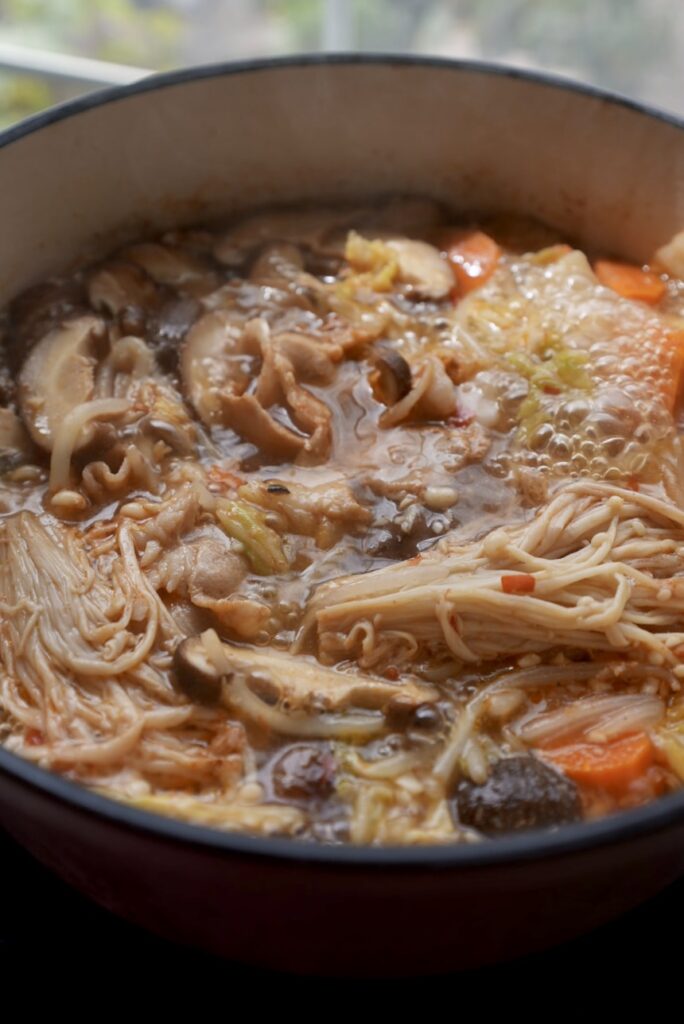
All you need to do is toss a variety of hot pot–friendly veggies into a large ziplock bag, add thinly sliced pork belly (or your protein of choice), and pop it into the freezer. When you’re ready to eat, there’s no need to thaw. Just heat up a pot of broth, drop everything in, and let it simmer until tender and flavorful.
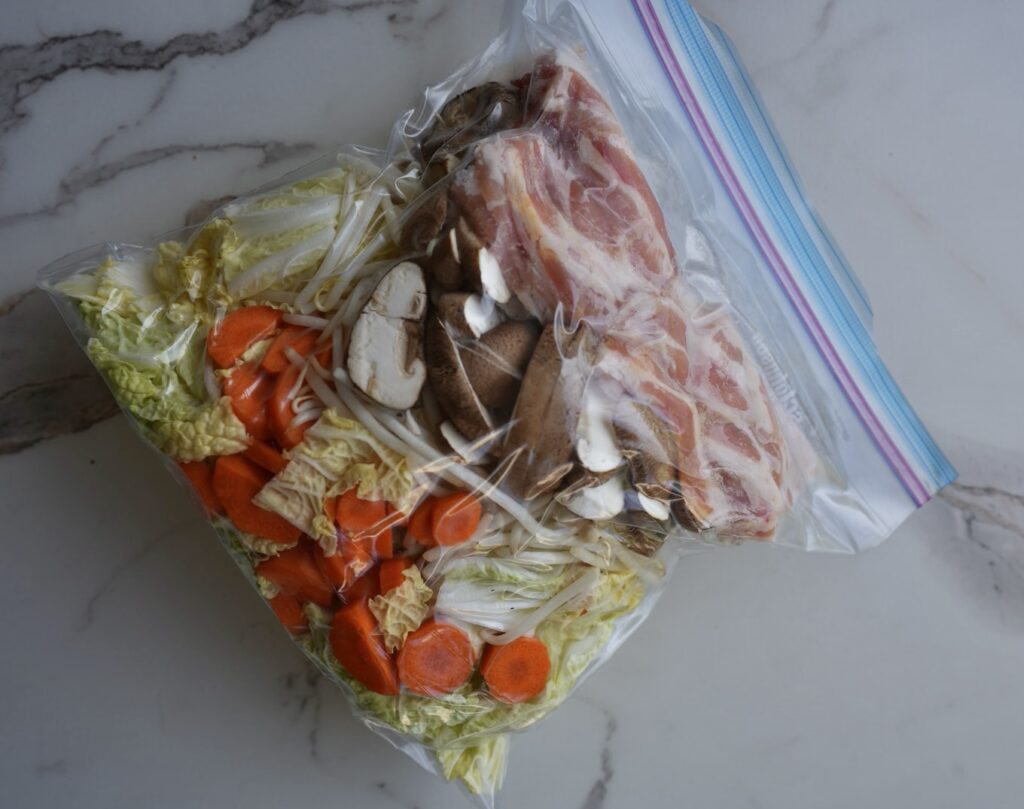
The result is a steaming, comforting hot pot that tastes even better than the restaurant version. Plus, the effort required is so minimal. Especially when you’re ready to eat it!
What I love most about this method is how customizable it is. You can mix and match your favorite vegetables. Think napa cabbage, bok choy, mushrooms, daikon, or even lotus root.
I like to add thinly sliced pork belly, but any type of protein would do great. Beef or tofu are also great alternatives! Plus, since everything is frozen together, it’s always ready when you are.
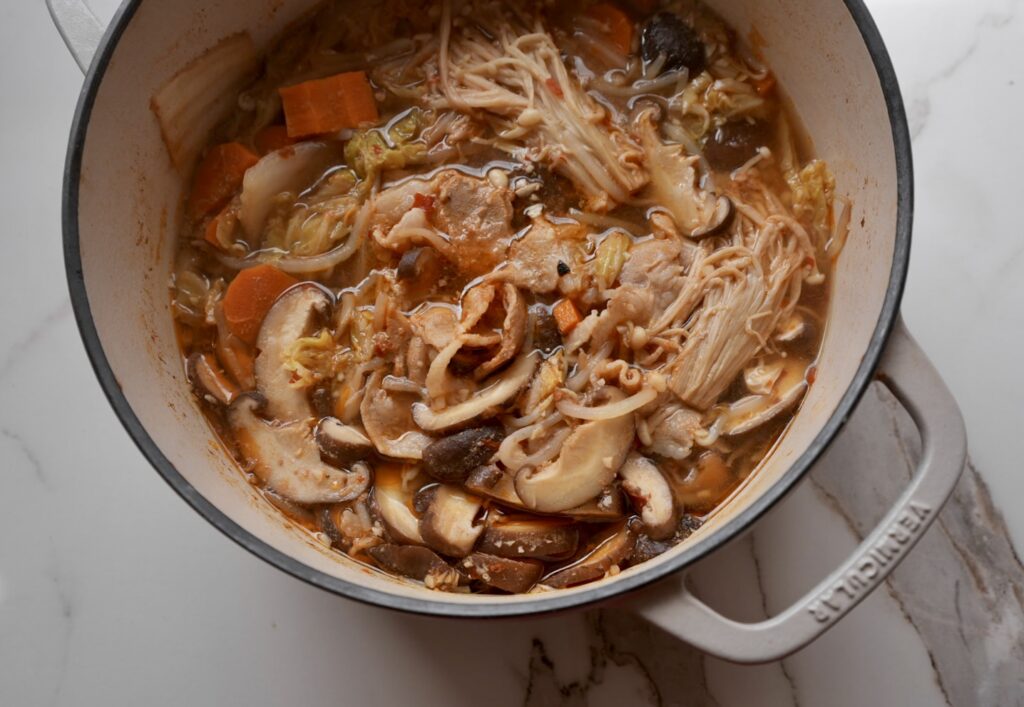
Not only does this taste amazing, but it’s also budget-friendly. For the price of one hot pot meal out, you can prep multiple bags at home.
It’s the perfect way to bring that cozy, family-style dining experience into your own kitchen whenever the craving strikes.
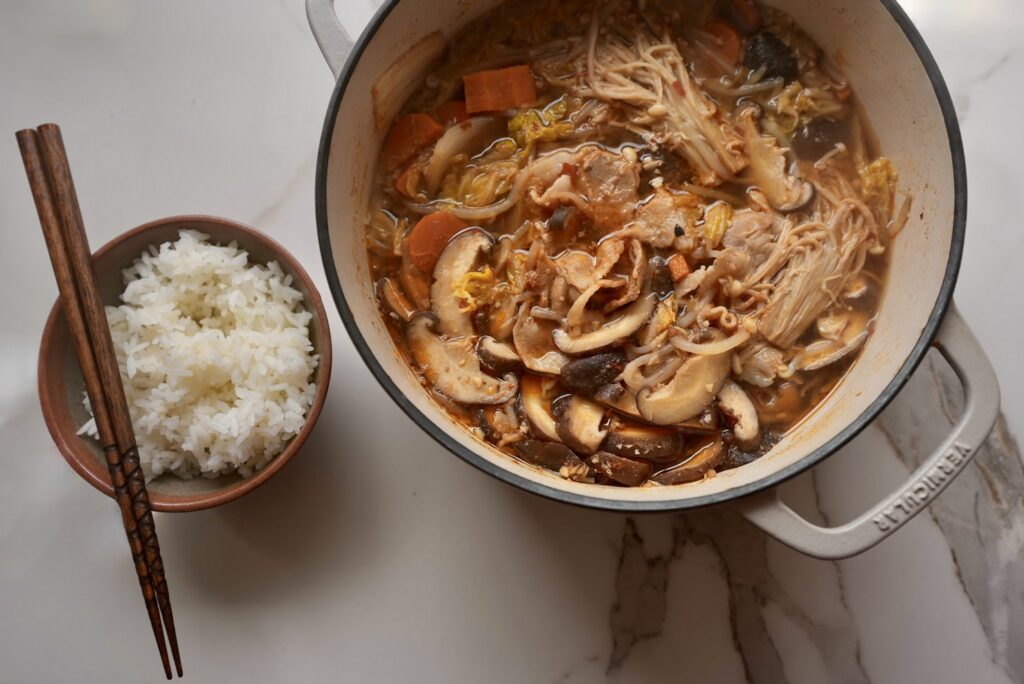
Hot Pot Dipping Sauce Options
When it comes to dipping sauces for Japanese hot pot, I almost always reach for ponzu (pictured). It’s a citrusy soy sauce that’s slightly tangy. But use whatever you like!
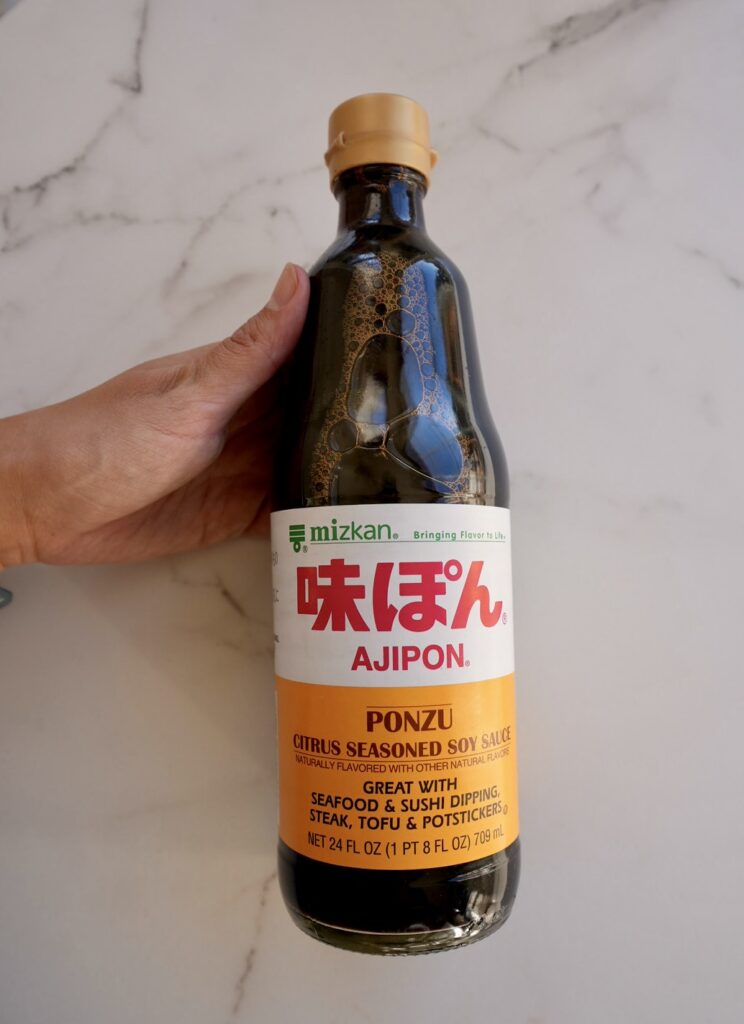
Japanese hot pot sauces are typically lighter and more delicate than other dipping sauces (like the thicker ones used in Chinese or Korean hot pots), so they’re meant to complement rather than overpower the dish. Here are some great options you can mix and match:
Other Japanese-Style Sauces:
- Sesame sauce (goma dare)
- Soy sauce + a splash of rice vinegar or yuzu
- Yuzu kosho + soy sauce
Customizable Add-Ins:
- Grated daikon
- Shichimi togarashi (Japanese chili powder)
- Chopped green onions or grated ginger
- Raw egg yolk
What Type of Proteins Can I Use?
For this recipe, I use thinly sliced pork belly, but feel free to use other types of protein! Here is a list of other options:
- Thinly sliced beef (ribeye, brisket, or sirloin): Cooks in seconds and stays tender.
- Chicken (thigh or breast, thinly sliced): Lean and mild, perfect for soaking up broth flavors.
- Lamb slices: A classic hot pot protein with a bold, gamey flavor.
- Seafood: Shrimp, fish fillets, scallops, mussels, or squid for a lighter, briny taste.
- Fish balls, shrimp balls, or beef balls: Fun, bouncy texture that’s a hot pot staple.
- Tofu (firm, soft, or fried): Great plant-based option that soaks up broth beautifully.
- Eggs: Crack an egg into the broth for added richness, or use quail eggs for a fun bite.
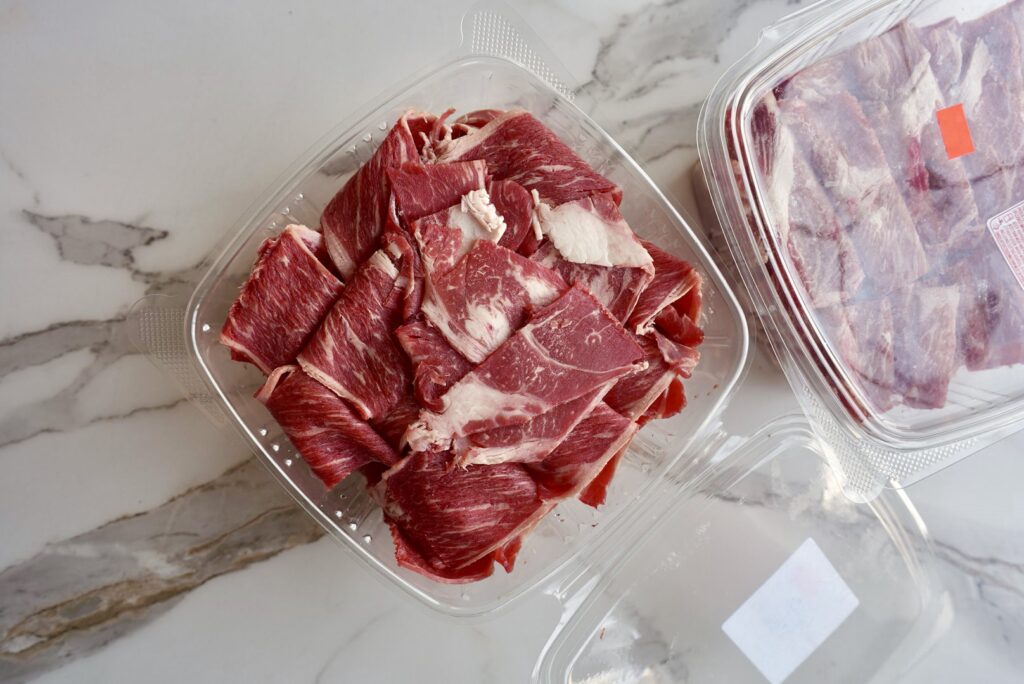
But if you don’t have access to an Asian market, don’t worry! Many grocery store butcher counters will slice meat thinly for you if you ask. Just be sure to request they cut it as thin as possible. You can also slice it yourself at home; I recommend placing the meat in the freezer for 1-2 hours beforehand to firm it up, which makes it much easier to cut into thin, even slices.
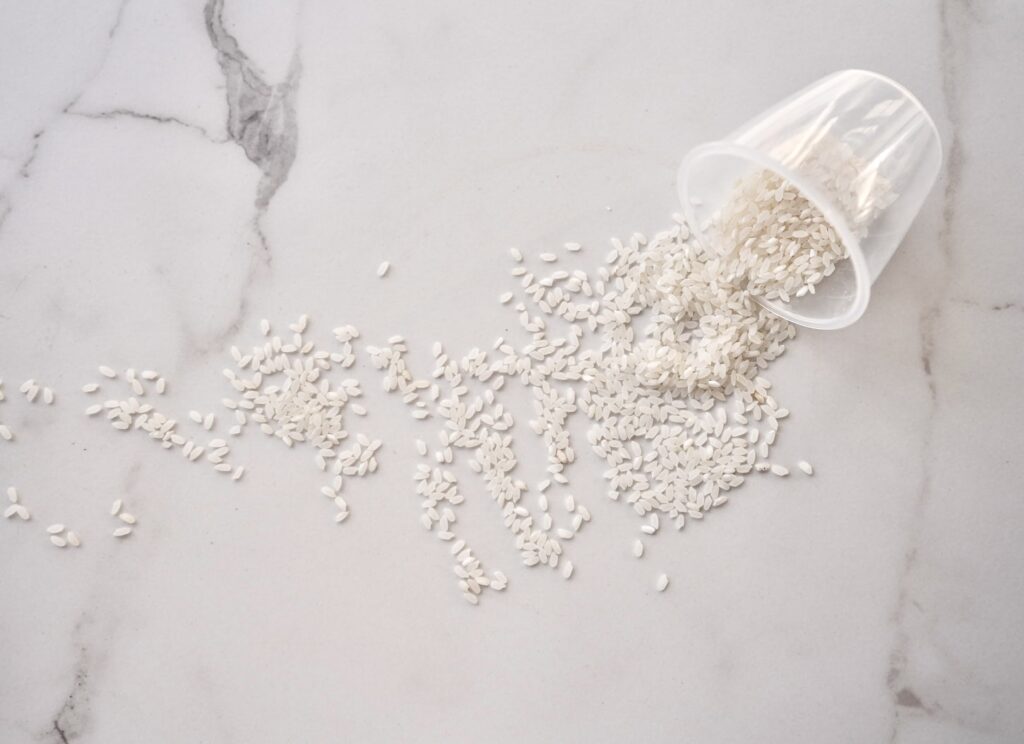
What Type of Rice to Use
I highly recommend eating hot pot with rice! Choosing the right type of rice can be confusing, especially with so many varieties available. In Japanese cooking, however, Japanese short-grain or medium-grain rice is almost always the go-to choice.
Short-grain rice, often labeled as sushi rice, is particularly prized for its soft and chewy texture, which pairs beautifully with traditional Japanese dishes. Medium-grain rice is a great alternative if short-grain isn’t available (I actually almost always use medium-grain myself because it’s generally cheaper where I live!). Both are ideal for recipes like this one, where the rice’s stickiness helps meld the flavors into every bite.
Recommended Rice Cookers
Do I need to have a fancy rice cooker to make rice? NO! Just like anything, generally, the higher the quality, the better. But you can make great rice in a cheap rice cooker, too!
Click the rice cooker photos to see my favorite rice cookers. I included a budget-friendly rice cooker I love! I use the Tiger 5.5-cup model shown. About 1/2 cup of Japanese short- or medium-grain rice makes 1 serving.
Key Features to Look For in a Rice Cooker:
- Timer and Keep Warm Function: Useful for planning meals ahead of time and keeping them warm until you’re ready to eat.
- Steaming Basket or Tray: Allows you to steam vegetables or cook other ingredients while the rice cooks.
- Multiple Cooking Functions: Ensure it has settings for steaming, slow cooking, and possibly even baking.
- Non-Stick Inner Pot: Makes cleaning easier and prevents sticking.
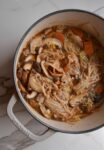
Freezer-Friendly Hot Pot
- Total Time: 45 minutes
Description
My frozen hot pot to meal prep is an easy, budget-friendly way to enjoy restaurant-quality hot pot at home by freezing prepped veggies and thinly sliced meats, ready to cook straight from the freezer into simmering broth.
Ingredients
Vegetables & Protein:
- 3 cups napa cabbage (~200 g or ~1/4 of a cabbage head), chopped into 2-3 inch bite-size pieces
- 1 pack (about 200 g / 7 oz) enoki mushrooms, ends trimmed
- 4–5 shiitake mushrooms, thinly sliced (be sure to remove the stems as they are really tough)
- 1/2 lb thinly sliced pork belly
- 1 medium carrot, chopped into bite-size pieces
- 1 1/2 cups bean sprouts
- 400 g shirataki noodles (about 4 servings)
Basic Hot Pot Broth Base:
- 4 cups dashi (or 4 cups of water + 2 tablespoons hondashi)
- 2 tablespoons soy sauce
- 1 tablespoon doubanjiang (fermented chili bean paste)
- 3 cloves garlic, minced
- 1/2 tablespoon fresh ginger, thinly sliced into 1-inch strips
Sukiyaki Hot Pot Broth Base:
- 3/4 cup mirin
- 1/4 cup sugar
- 1/2 cup soy sauce
For Serving:
- Ponzu (I recommend eating this with the basic broth hot pot as a dipping sauce)
- Pasteurized raw egg, mixed (I recommend eating this with sukiyaki as a dipping sauce)
- 2 green onions, finely chopped (for garnish)
Instructions
Freezer Prep Instructions:
- Take a large freezer-safe zip-lock bag.
- Add the napa cabbage, enoki mushrooms, shiitake mushrooms, carrots, bean sprouts, and pork belly (layer them in any order, it doesn’t matter).
- Seal the bag, pressing out as much air as possible. Label with the date and contents, then freeze flat for easier storage.
Cooking Instructions:
- In a large pot, combine the broth ingredients (choose between the basic broth or sukiyaki broth). Bring to a simmer over medium heat.
- Remove the frozen bag of vegetables and pork from the freezer and add directly to the simmering broth. If you’re using shirataki noodles, add them to the broth now too.
- Cover with a lid and let cook at a steady simmer, stirring occasionally, until everything is heated through and the pork is cooked, about 15 – 20 minutes.
- Serve hot, with a side of ponzu or raw egg depending on the hot pot you cooked.
- Prep Time: 30 minutes
- Cook Time: 15 minutes
Nutrition
- Serving Size: 2

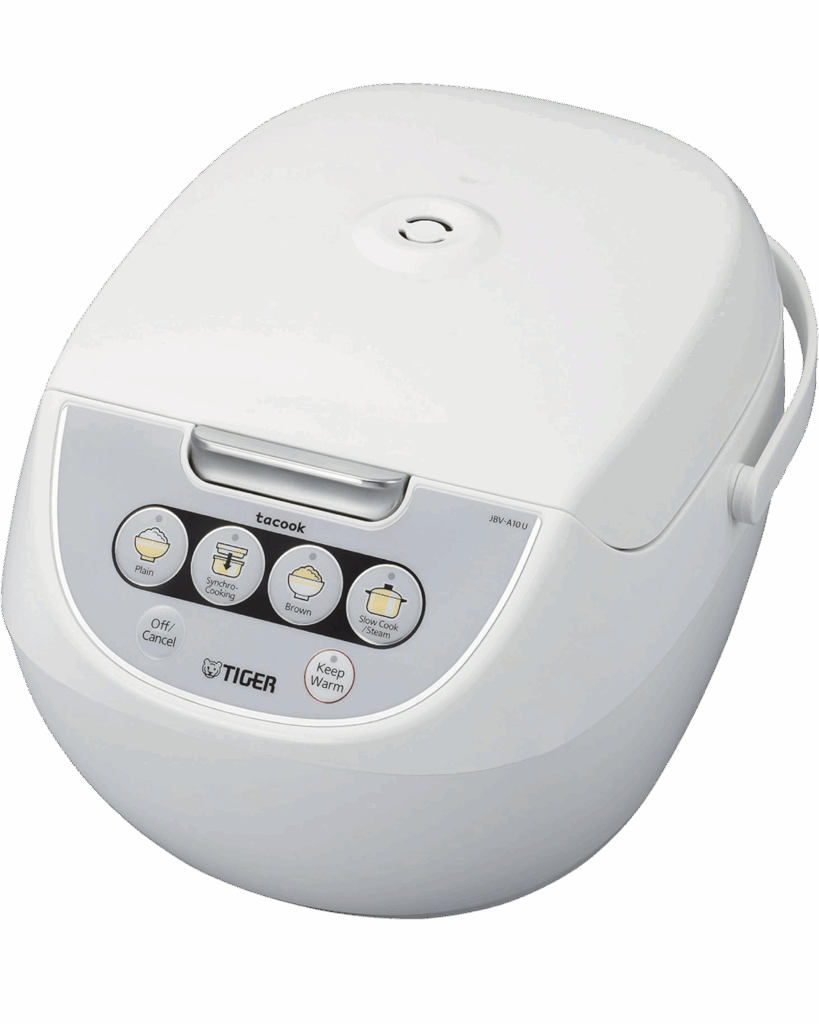
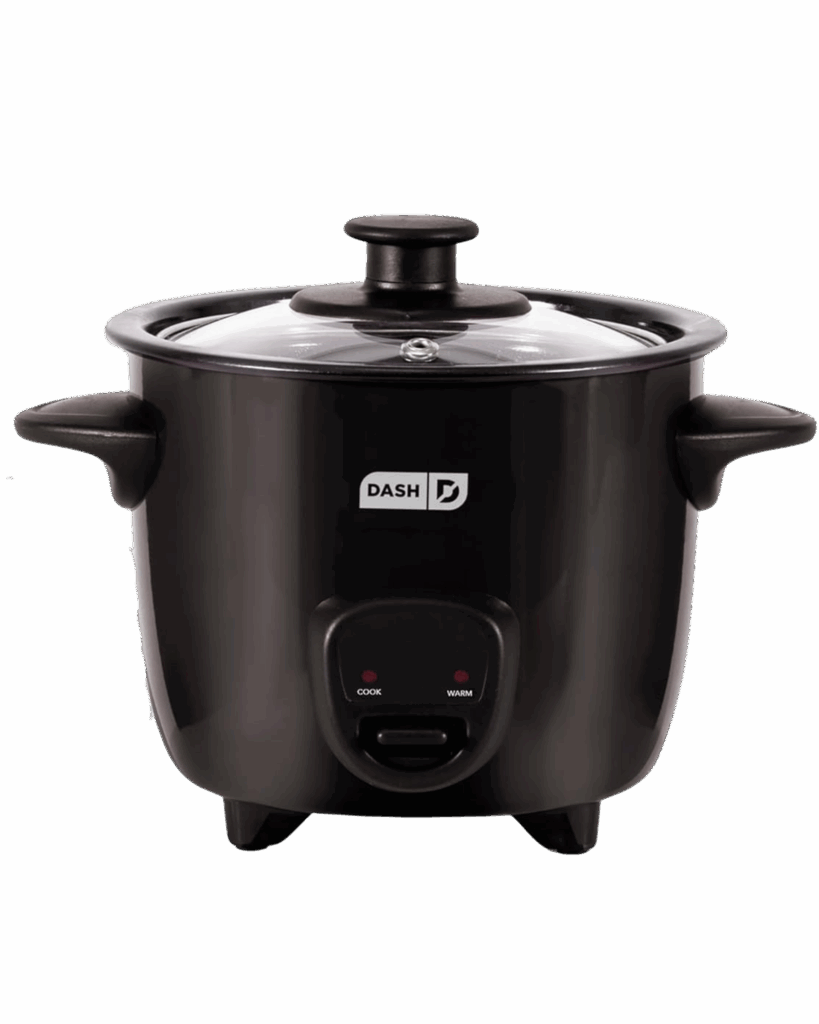



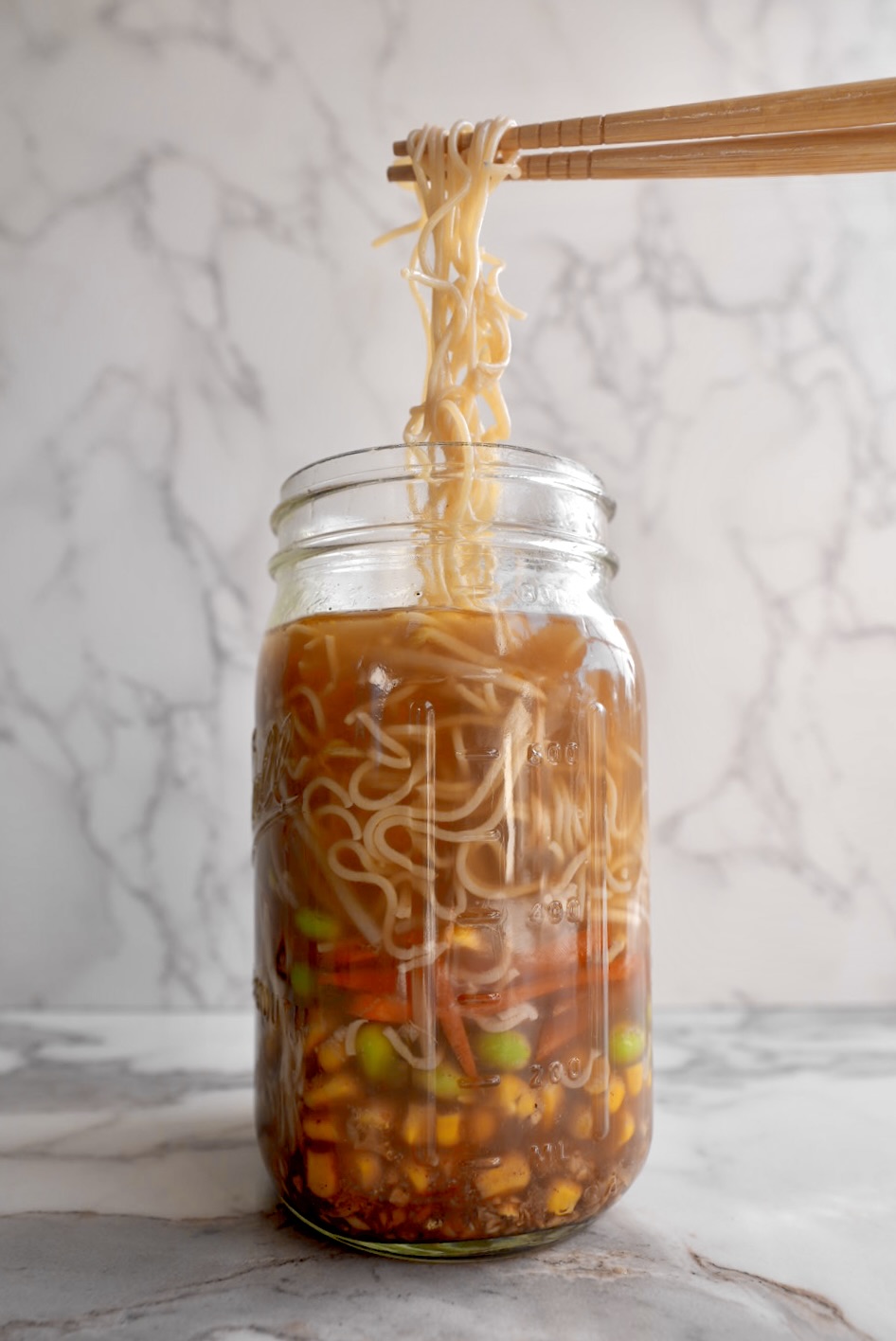
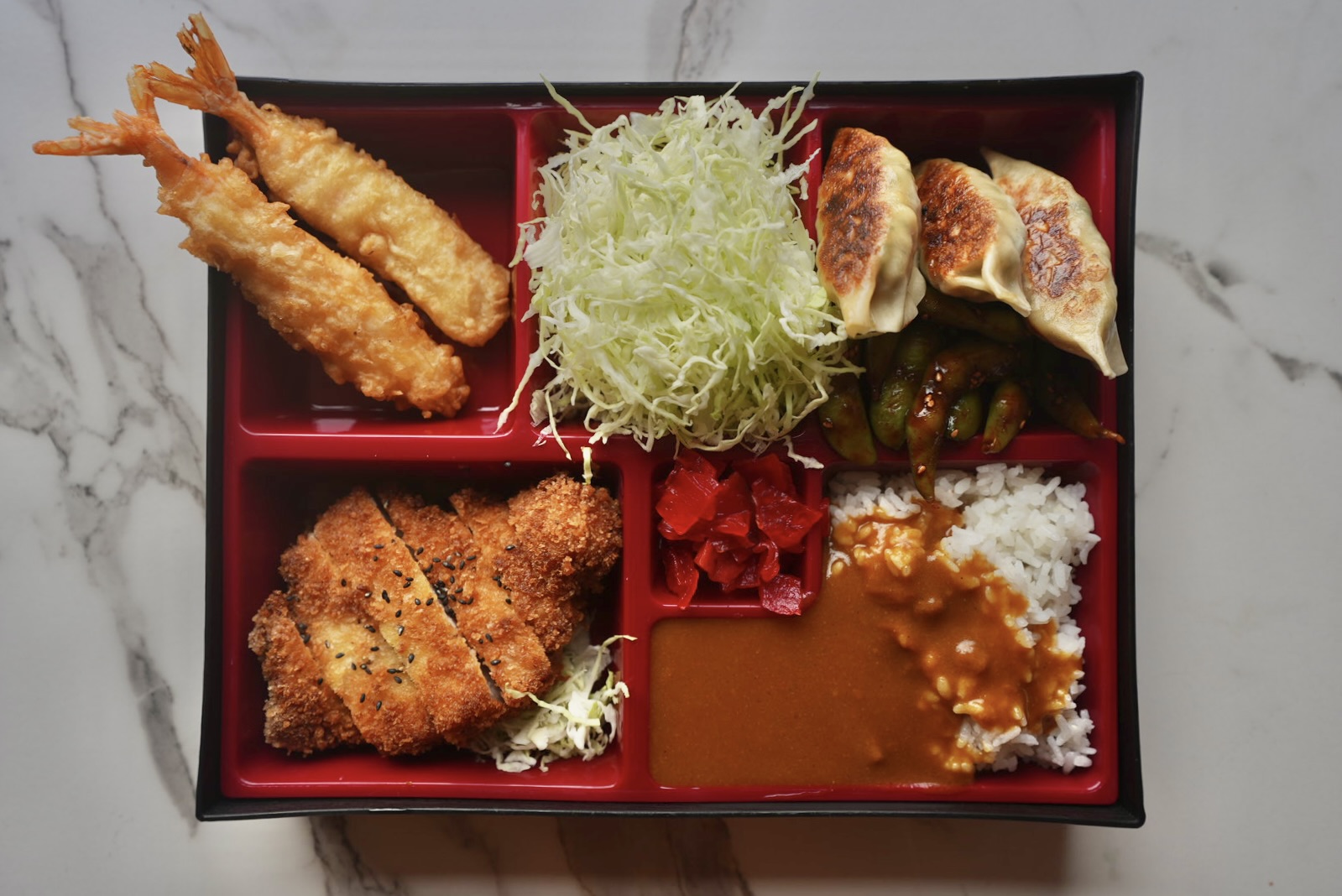
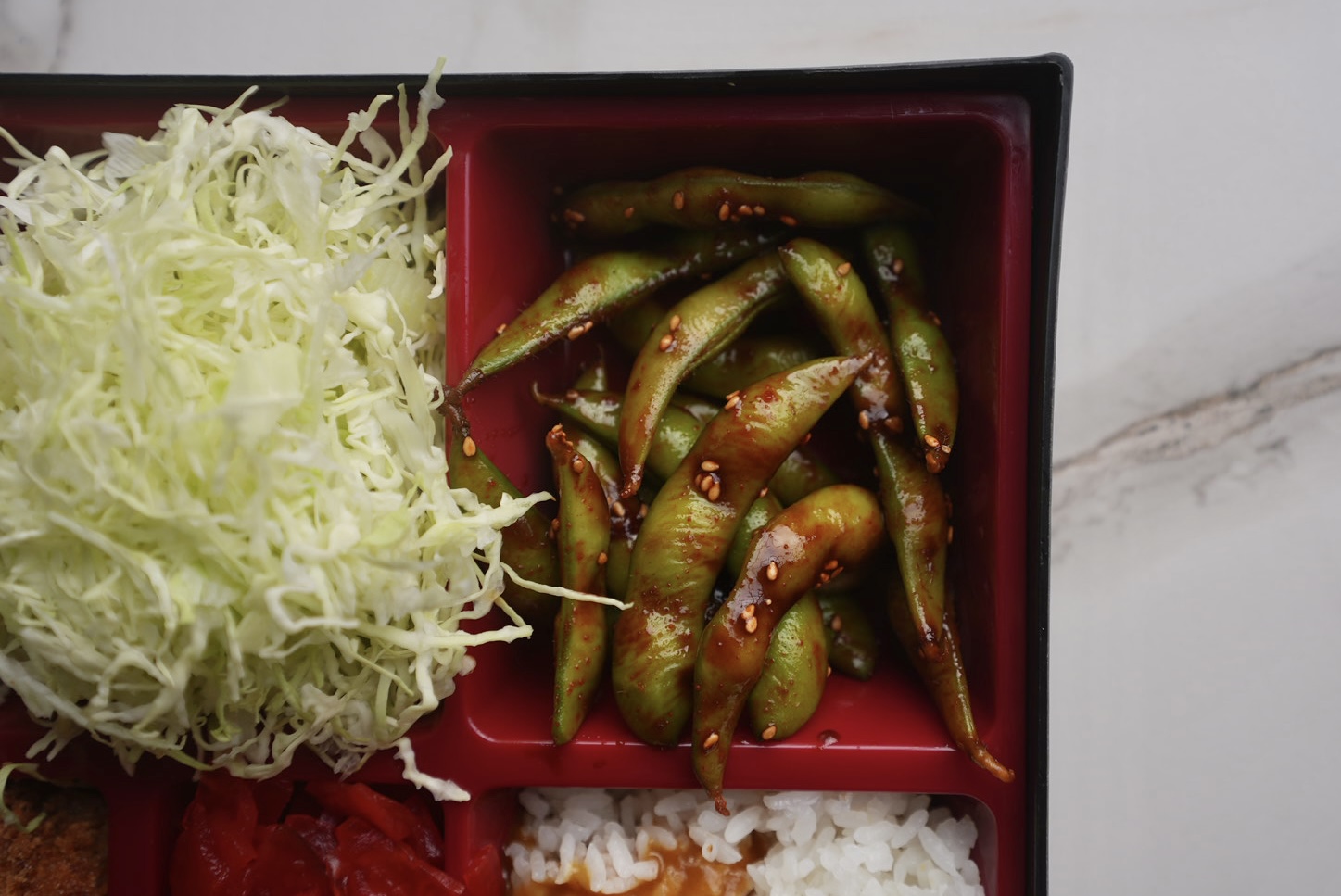
I love your content! How long does this last in the freezer?
Thank you, Judy! I’d say about 2-3 months max. 🙂
Made and froze this the morning I saw your video on it. Got too excited and ate one of the bags for dinner. Did not disappoint. 😂
Hahaha that’s amazing! Thanks for sharing, Elijah!
Made this, substituted the pork belly for chicken thighs. 10/10. Thank you.
So great to hear! Thanks for sharing, Melanie!
Do you wash the veggies before putting it in the ziploc bags?
Yes!